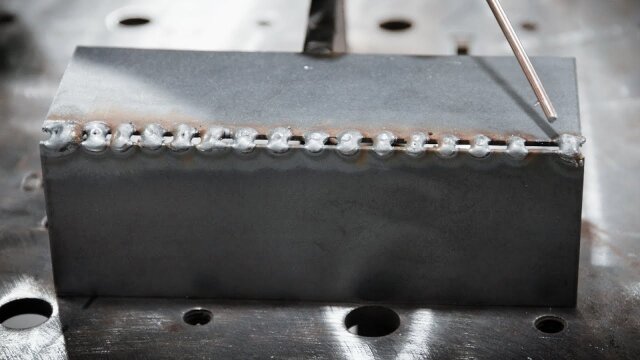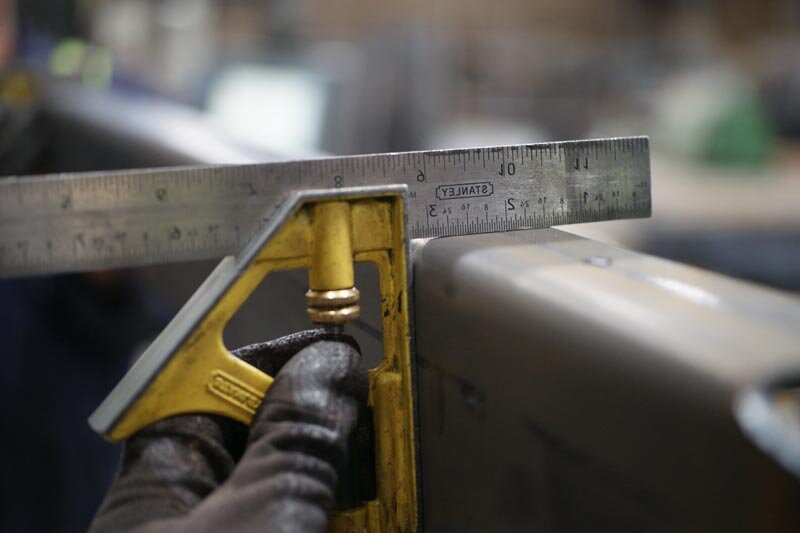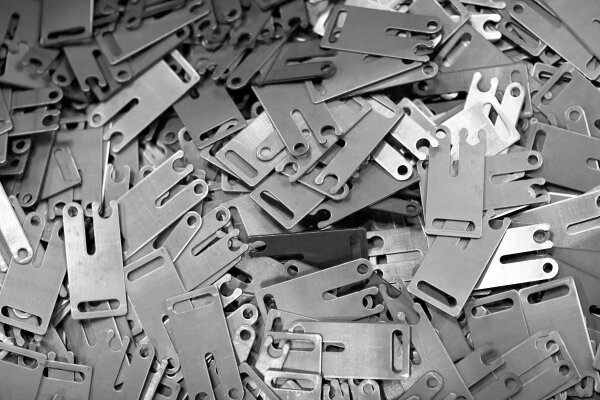عند العمل مع المعدن، فإن اختيار طريقة التصنيع المثالية أمر بالغ الأهمية. يمكن أن يؤثر هذا القرار على كل شيء بدءًا من وقت الإنتاج إلى التكلفة والمتانة والأداء. وسواء كنت تقوم ببناء نماذج أولية أو تستعد للتصنيع على نطاق واسع، فإن اختيار الطريقة المناسبة يمكن أن يساعد في تبسيط مشروعك وضمان النجاح. ولكن مع وجود العديد من الخيارات، ما هو الأفضل لاحتياجاتك؟
إن فهم الاحتياجات الفريدة لمشروعك هو مفتاح اختيار طريقة التصنيع الصحيحة. وباستخدام النهج الصحيح، يمكنك تحسين التكلفة والكفاءة على حد سواء، سواء كنت تقوم بإنشاء مكونات صغيرة أو تجميعات كبيرة.

ما هو تصنيع المعادن؟
تصنيع المعادن هو عملية إنشاء هياكل وأجزاء من مواد معدنية مختلفة. وتتضمن قطع المعادن وثنيها وتشكيلها وتجميعها لتشكيل منتجات مخصصة. وهي تغطي تقنيات مختلفة تُستخدم لصنع كل شيء بدءاً من إطارات السيارات وحتى العبوات الإلكترونية.
فهو يساعد على إنشاء نماذج أولية مخصصة وقطع كبيرة الحجم. يتيح التصنيع للمصنعين تحقيق الدقة والاتساق وتوفير التكاليف في مختلف المشاريع.
أنواع عمليات تصنيع المعادن
يشمل تصنيع المعادن عمليات مختلفة، كل منها يخدم غرضًا محددًا. تساعد هذه العمليات في إنشاء أجزاء بالشكل والقوة والحجم المناسبين للاستخدامات المختلفة.
قطع
القطع هو أحد أكثر الطرق شيوعاً في تصنيع المعادن. وهي تتضمن تقسيم قطعة معدنية إلى أقسام أصغر. ولا تزال الطرق التقليدية، مثل النشر، مستخدمة حتى اليوم. ومع ذلك، فإن التقنيات الحديثة مثل المقص الكهربائي, النفاثة المائية, الليزر، و قطع البلازما توفر دقة أكبر. هذه الطرق فعالة لتشكيل المعدن أو إعداده لمزيد من المعالجة.
يمكن إجراء عملية القطع بطرق مختلفة، باستخدام قواطع كهربائية أو يدوية أو باستخدام الحاسب الآلي. واعتمادًا على ما هو مطلوب، يمكن أن تكون الخطوة الأولى أو الأخيرة في العملية. القطع بالقالب، حيث يتم استخدام أدوات ذات حواف حادة لتقطيع المعدن، وهي طريقة قطع شائعة أخرى.
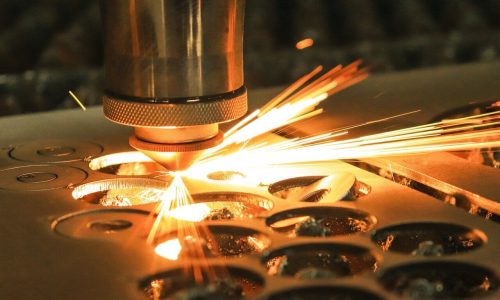
الانحناء
الانحناء يُستخدم لإنشاء أشكال منحنية في المعدن. إنه جزء أساسي من تصنيع الصفائح المعدنية. تستخدم الماكينات مثل مكابح الكبس القوة لثني المعدن في الشكل الصحيح. تعتمد طريقة الثني على عوامل مثل سُمك المادة وشكلها وزاويتها.
هذه العملية ضرورية لصنع اقواس, الصناديقوالقنوات. ويمكن استخدامه أيضًا لإنشاء تصميمات أكثر تعقيدًا. ويتمثل التحدي في الثني في تجنب تشقق أو تشوه المادة أثناء العملية.
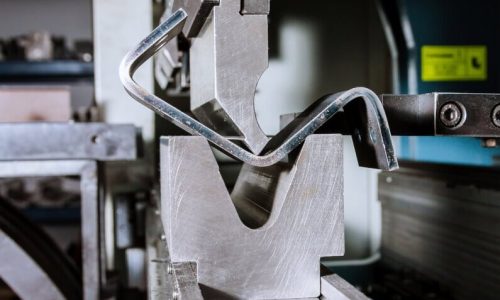
لحام
لحام يتضمن ربط القطع المعدنية عن طريق صهرها وإضافة مادة حشو، مما يخلق رابطة قوية بينها. هناك أنواع مختلفة من اللحام، مثل لحام MIG (الغاز الخامل المعدني), لحام TIG (غاز التنغستن الخامل).، و اللحام بالعصا. يناسب كل نوع مواد واستخدامات مختلفة.
يُستخدم اللحام عادةً في صناعة الأجزاء والهياكل الثقيلة. إنه أمر حيوي في صناعات مثل البناء والسيارات والفضاء. جودة اللحام أمر بالغ الأهمية لضمان قوة ومتانة المنتج النهائي.

ختم
ختم هي عملية يتم فيها ضغط صفيحة معدنية في قالب لتشكيل شكل ما. وهي ممتازة للإنتاج بكميات كبيرة لأنها يمكن أن تصنع أشكالاً معقدة بسرعة ودقة. القالب مصمم بحواف حادة لضمان إجراء قطع نظيف.
غالبًا ما يستخدم الختم في صناعات السيارات والإلكترونيات لصنع أجزاء مثل الأقواس والأغطية و اللوحات. إنها طريقة تتسم بالكفاءة والفعالية من حيث التكلفة لعمليات الإنتاج على نطاق واسع.
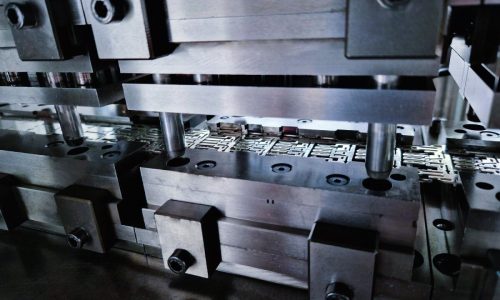
بالقطع
التصنيع الآلي هو إزالة المواد من قطعة العمل لتشكيلها أو تشطيبها. أدوات مثل التدريباتوالمخارط، و آلات التصنيع باستخدام الحاسب الآلي تستخدم للقطع, طَحنأو صقل المعدن. يعتبر التصنيع الآلي مثاليًا لإنتاج أجزاء دقيقة ذات تفاوتات ضيقة.
وغالباً ما تستخدم لصنع مكونات مفصلة ومعقدة. تعمل العملية بشكل جيد مع العديد من المواد، مثل المعادن والبلاستيك والمواد المركبة. وتتمثل ميزتها الرئيسية في القدرة على إنشاء أجزاء معقدة ودقيقة.
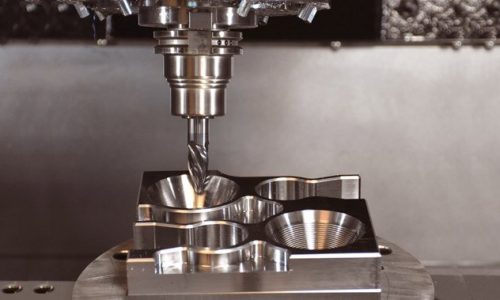
البثق
البثق هي طريقة يتم فيها دفع مادة، عادةً ما تكون معدنية، من خلال قالب لإنشاء شكل متصل بمقطع عرضي ثابت. يتم تسخين المادة قبل دفعها من خلال القالب، لتشكيل المنتج النهائي.
تصنع هذه العملية منتجات طويلة مثل الأنابيب والقضبان والعوارض. واعتمادًا على القالب، يمكن تخصيص الشكل، مما يجعل البثق متعدد الاستخدامات للمقاطع البسيطة والمعقدة.

يصب
يصب تتضمن صب معدن سائل في قالب والسماح له بالتبريد والتصلب. يحدد شكل القالب المنتج النهائي. وتساعد هذه الطريقة في إنشاء أشكال كبيرة أو معقدة يصعب تحقيقها من خلال عمليات أخرى مثل التصنيع الآلي أو الختم.
يشيع استخدام الصب في الأجزاء التي تحتاج إلى أن تكون قوية ومتينة، مثل كتل المحركات ومكونات الآلات الصناعية. وغالباً ما تستخدم معادن مثل الألومنيوم والصلب والبرونز في الصب.
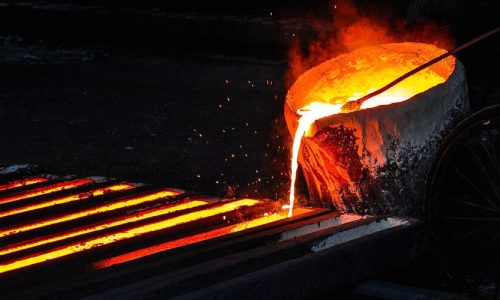
تشكيل
تشكيل هي فئة واسعة من العمليات التي تقوم بتشكيل المعدن دون إزالة المواد. وتستخدم هذه الطرق القوة لثني المعدن أو مده أو ضغطه إلى الشكل المطلوب. وتشمل تقنيات التشكيل القياسية الدرفلة والطرق والسحب العميق.
التشكيل مثالي لصنع الأجزاء التي تتطلب قوة ومتانة عالية. وهي تُستخدم في صناعات مثل صناعة السيارات لصنع ألواح هياكل السيارات, الإطاراتوالمكونات الهيكلية. الميزة الرئيسية للتشكيل هي أنه يحافظ على سلامة المادة أثناء إنشاء أشكال معقدة.
التصنيع المضاف
التصنيع المضاف، أو الطباعة ثلاثية الأبعادينطوي على بناء طبقات من المواد لإنشاء جزء. تُستخدم هذه الطريقة بشكل شائع في النماذج الأولية السريعة والإنتاج منخفض الحجم. ويمكنها إنتاج أجزاء معقدة للغاية ومخصصة يصعب إنشاؤها بالطرق التقليدية.
تنمو هذه التكنولوجيا في مجال الطيران والسيارات والأجهزة الطبية. يتيح التصنيع الإضافي إمكانية تصنيع هياكل خفيفة الوزن وتصاميم مفصلة مع تقليل هدر المواد.
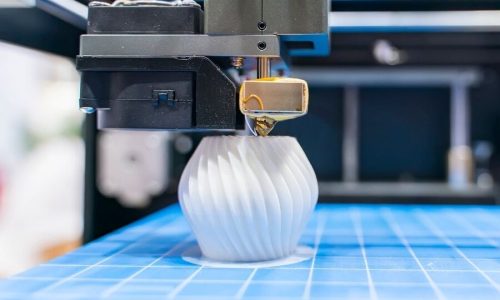
ما المعادن التي يشيع استخدامها في تصنيع المعادن؟
في مجال تصنيع المعادن، يعد اختيار المعدن المناسب أمرًا أساسيًا لضمان أداء المنتج النهائي بشكل جيد ودوامه لفترة طويلة. تتميز المعادن المختلفة بخصائص مختلفة تجعلها أكثر ملاءمة لاستخدامات محددة. دعنا نلقي نظرة على بعض المعادن الأكثر استخدامًا في صناعة التصنيع.
فُولاَذ
الصلب هو أحد المعادن الأكثر شيوعًا المستخدمة في التصنيع. فهو قوي ومتين ويمكن خلطه مع معادن أخرى لتحسين خصائص معينة. والأنواع الأكثر شيوعًا هي الكربون والفولاذ المقاوم للصدأ والسبائك. وغالباً ما يُستخدم الفولاذ في صناعة الأجزاء الهيكلية ومكونات السيارات والآلات لأنه متعدد الاستخدامات وبأسعار معقولة.
الألومنيوم
يتميز الألومنيوم بخفة وزنه ومقاومته للتآكل وسهولة التعامل معه، مما يجعله خيارًا شائعًا في صناعات الطيران والسيارات والإلكترونيات. ويُستخدم عادةً في صناعة الهياكل والألواح والمرفقات. كما يمكن طلاء الألومنيوم بأكسيد الألومنيوم، مما يجعله أكثر متانة ويزيد من مظهره.
الفولاذ المقاوم للصدأ
يشتهر الفولاذ المقاوم للصدأ بمقاومته للتآكل والبقع، مما يجعله مثاليًا للبيئات القاسية. ويوجد عادةً في معالجة الأغذية والمعدات الطبية والهندسة المعمارية. كما أن قوته وقدرته على تحمل درجات الحرارة والضغوط الشديدة تجعل من الفولاذ المقاوم للصدأ خياراً مفضلاً للتطبيقات العملية والزخرفية.
نحاس
يشتهر النحاس بقدرته الممتازة على توصيل الكهرباء، مما يجعله مادة أساسية في الصناعات الكهربائية والإلكترونية. كما أنه شديد المقاومة للتآكل، خاصة في البيئات البحرية. يستخدم النحاس على نطاق واسع في الأسلاك الكهربائية والسباكة ومكونات الديكور.
نحاس
النحاس الأصفر هو سبيكة من النحاس والزنك. وهو معروف بمقاومته للتآكل ولونه الذهبي الأصفر الجذاب. وغالباً ما يستخدم النحاس الأصفر في صناعة التجهيزات والصمامات والآلات الموسيقية. كما أنه سهل التصنيع آلياً، مما يجعله خياراً جيداً لإنتاج الأجزاء التفصيلية المستخدمة في التطبيقات الوظيفية والزخرفية على حد سواء.
برونزية
البرونز، وهو سبيكة من النحاس والقصدير، يحظى بتقدير كبير لقوته ومقاومته للتآكل والتآكل، خاصةً في البيئات البحرية. وغالبًا ما يستخدم في صناعة المحامل والتروس والأجهزة البحرية. قدرة البرونز على تحمل الاحتكاك والاستخدام الكثيف تجعله خيارًا شائعًا للتطبيقات عالية الأداء.
التيتانيوم
التيتانيوم خفيف الوزن ومقاوم للتآكل ويتميز بنسبة عالية من القوة إلى الوزن. وهذه الخصائص تجعله مثاليًا للصناعات مثل صناعة الطيران والأجهزة الطبية. وغالباً ما يُستخدم التيتانيوم في الأجزاء التي تحتاج إلى أن تكون قوية وخفيفة في نفس الوقت. كما أنه معروف بتحمله لدرجات الحرارة العالية والبيئات القاسية.
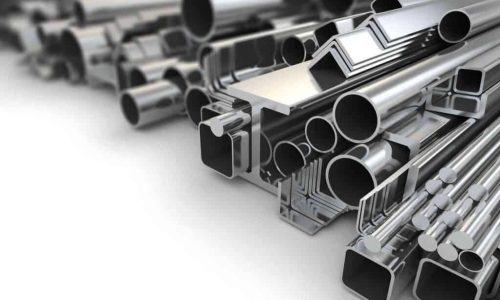
ما هي إيجابيات التصنيع المعدني وسلبياته؟
يشيع استخدام تصنيع المعادن في صناعات السيارات والبناء والطيران. فهو يساعد على إنشاء أجزاء متينة ومخصصة. ولكن، مثلها مثل أي عملية، لها فوائدها وتحدياتها. دعونا نلقي نظرة فاحصة على إيجابيات وسلبيات تصنيع المعادن.
مزايا تصنيع المعادن
التخصيص
تتمثل إحدى أكبر مزايا تصنيع المعادن في القدرة على صنع منتجات مخصصة. سواء كنت تقوم بتصميم نموذج أولي أو إنتاج أجزاء بكميات كبيرة، فإن تصنيع المعادن يتيح لك تصميمات دقيقة ومرونة.
المتانة والقوة
عادةً ما تكون الأجزاء المعدنية المصنوعة من خلال التصنيع قوية وطويلة الأمد. تشتهر المعادن مثل الفولاذ والفولاذ المقاوم للصدأ والتيتانيوم بقوتها ومتانتها، مما يجعلها مثالية للاستخدامات الشاقة.
مجموعة واسعة من التطبيقات
يمكن لتصنيع المعادن إنشاء العديد من أنواع المنتجات، من المكونات البسيطة إلى الأجزاء المعقدة. إن تنوع المواد والأساليب يجعلها مفيدة في صناعات مثل البناء والسيارات والإلكترونيات والفضاء.
فعالة من حيث التكلفة للإنتاج الضخم
يمكن أن يكون تصنيع المعادن فعالاً للغاية من حيث التكلفة للإنتاج على نطاق واسع. تسمح تقنيات مثل الختم والتشغيل الآلي واللحام للمصنعين بإنتاج العديد من الأجزاء بسرعة وبتكلفة أقل لكل وحدة.
دقة وجودة عالية
وبفضل التقدم التكنولوجي، توفر أساليب مثل التصنيع باستخدام الحاسب الآلي والقطع بالليزر دقة عالية جدًا. يمكن لهذه التقنيات إنتاج أجزاء ذات تفاوتات دقيقة للغاية، مما يضمن أن يكون كل عنصر عالي الجودة والاتساق.
سلبيات تصنيع المعادن
ارتفاع تكاليف الإعداد الأولي
في حين أن تصنيع المعادن فعال من حيث التكلفة للإنتاج بكميات كبيرة، إلا أن الإعداد الأولي قد يكون مكلفًا. فالأدوات والآلات والقوالب اللازمة للختم أو الصب تتطلب استثمارًا كبيرًا. وقد يمثل ذلك تحدياً للشركات الصغيرة أو الشركات ذات الميزانيات المحدودة.
مرونة تصميم محدودة لبعض العمليات
قد لا تسمح بعض طرق تصنيع المعادن، مثل الصب أو الختم، بتصميمات معقدة أو معقدة للغاية. على سبيل المثال، قد تكون بعض الأشكال المحددة معقدة أو مكلفة في صنعها باستخدام الطرق التقليدية.
النفايات المادية
يمكن أن يؤدي تصنيع المعادن في بعض الأحيان إلى إهدار المواد، خاصةً أثناء القطع والتشغيل الآلي. وفي حين أنه لا يمكن تجنب بعض النفايات، إلا أنها يمكن أن تزيد من تكاليف المواد وتخلق مخاوف بيئية إذا لم تتم إدارتها بشكل صحيح.
متطلبات العمالة الماهرة
غالباً ما يتطلب تصنيع المعادن عمالاً مهرة لتشغيل الماكينات وإنشاء تصميمات مفصلة. وهذا يمكن أن يجعل التوظيف والتدريب أكثر استهلاكاً للوقت ومكلفاً، كما أن الاحتفاظ بالموظفين المهرة يمكن أن يشكل تحدياً في بعض المناطق.
تطبيقات عمليات تصنيع المعادن
تعتبر عمليات تصنيع المعادن حيوية في صناعة المنتجات للعديد من الصناعات. دعونا نستكشف كيفية استخدام تصنيع المعادن في قطاعات مختلفة.
صناعة السيارات
في صناعة السيارات، يصنع التصنيع المعدني أجزاء مثل الإطارات وألواح الهيكل وأنظمة العادم ومكونات المحرك. تُستخدم تقنيات مثل الختم واللحام والتشغيل الآلي بشكل شائع لجعل هذه الأجزاء دقيقة ومتينة.
صناعة الطيران
تحتاج صناعة الطيران إلى مواد قوية وخفيفة الوزن ومقاومة للظروف القاسية. تُستخدم عمليات تصنيع المعادن مثل اللحام والتشغيل الآلي والصب على نطاق واسع لصنع أجزاء للطائرات والمركبات الفضائية.
صناعة البناء والتشييد
في مجال الإنشاءات، يصنع تصنيع المعادن الأجزاء الهيكلية مثل العوارض والأعمدة والدعامات التي تدعم المباني والبنية التحتية. يشيع استخدام الفولاذ والفولاذ المقاوم للصدأ وتصنيعه في أشكال وأحجام مختلفة لتلبية المتطلبات الهندسية.
بضائع المستهلكين
يُعد تصنيع المعادن عملية مهمة لصناعة السلع الاستهلاكية، بما في ذلك الأجهزة والإلكترونيات والأثاث. على سبيل المثال، تُستخدم في صناعة إطارات الثلاجات والغسالات وأجهزة التلفزيون.
الطاقة وتوليد الطاقة
يُستخدم تصنيع المعادن لبناء المعدات الثقيلة والبنية التحتية في صناعات الطاقة وتوليد الطاقة. ويشمل ذلك التوربينات ومحطات الطاقة وخطوط الأنابيب وصهاريج التخزين.
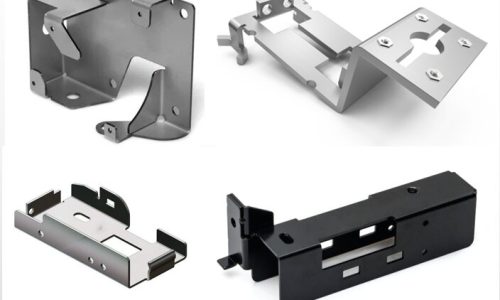
كيف تختار مصنّعي المعادن؟
يعد اختيار صانع المعادن المناسب أمرًا ضروريًا لضمان جودة وكفاءة مشروعك. قد يكون من الصعب معرفة الأفضل لاحتياجاتك في ظل وجود العديد من الخيارات المتاحة. إليك بعض العوامل الرئيسية التي يجب مراعاتها عند اختيار شريك تصنيع المعادن.
الخبرة والخبرة
من أهم الأشياء التي يجب مراعاتها هي خبرة المصنّع. فالشركة التي تتمتع بسنوات من الخبرة من المرجح أن تتعامل مع المشاريع المعقدة بشكل جيد وتقدم نتائج عالية الجودة. ابحث عن صانعي المعادن ذوي الخبرة في نوع المعدن المحدد وعملية التصنيع التي تحتاجها، سواءً اللحام أو القطع أو الثني أو الثني أو التصنيع الآلي.
نطاق الخدمات
من الضروري اختيار مُصنِّع يقدم مجموعة واسعة من الخدمات. فهذا يمنحك المزيد من المرونة ويضمن قدرتها على التعامل مع كل جزء من مشروعك. ابحث عن المصنّعين الذين يمكنهم عمل النماذج الأولية والإنتاج بكميات كبيرة. من الجيد أيضًا أن يكون لديهم قدرات متقدمة مثل التصنيع باستخدام الحاسب الآلي أو القطع بالليزر أو الطباعة ثلاثية الأبعاد إذا كان مشروعك يحتاج إلى ذلك.
الجودة والدقة
تعكس جودة المنتج النهائي مهارات الصانع. تأكد من أن المُصنِّع يستخدم مواد عالية الجودة ومعدات حديثة للقطع واللحام والتشطيبات الدقيقة. اسأل عن عمليات مراقبة الجودة وكيفية ضمان الاتساق في عملهم. يمكن أن تُظهر معايير الشهادة مثل ISO 9001 أن الصانع ملتزم بالجودة.
المعدات والتكنولوجيا
يجب أن يكون لدى المُصنِّع الموثوق به معدات وتكنولوجيا حديثة. ويشمل ذلك ماكينات التحكم الرقمي باستخدام الحاسوب، وأنظمة القطع بالليزر، وأدوات اللحام الآلية، وغيرها من المعدات المتطورة التي تحسن الدقة والسرعة والكفاءة. اسأل عن التكنولوجيا التي يستخدمونها للتأكد من أنها تلبي احتياجات مشروعك، خاصةً إذا كان المشروع يتضمن تصميمات مفصلة أو أجزاء معقدة.
المهلة الزمنية والتسليم
التسليم في الوقت المناسب مهم لأي مشروع. تأكد من أن تسأل عن المهل الزمنية للمصنع وقدرته على الوفاء بالمواعيد النهائية. سيقدم الصانع الجيد جداول زمنية واضحة وسيكون منفتحاً على أي تأخير محتمل.
خاتمة
يشمل تصنيع المعادن مجموعة متنوعة من العمليات، مثل القطع، والثني، واللحام، والختم، والختم، والتشغيل الآلي، والبثق، والصب، والتشكيل، والتصنيع الإضافي. تلعب كل عملية دورًا حاسمًا في تشكيل المعادن لتلبية احتياجات محددة في مختلف الصناعات. يعتمد اختيار عملية التصنيع المناسبة على المواد والتصميم ومتطلبات المشروع.
إذا كنت تبحث عن قطع معدنية عالية الجودة ومتينة لمشروعك القادم، فنحن هنا لمساعدتك. اتصل بنا اليوم للبدء وضمان أن مشروعك يلبي أعلى المعايير!
مهلا، أنا كيفن لي

على مدى السنوات العشر الماضية، كنت منغمسًا في أشكال مختلفة من تصنيع الصفائح المعدنية، وشاركت رؤى رائعة هنا من تجاربي عبر ورش العمل المتنوعة.
ابقى على تواصل

كيفن لي
لدي أكثر من عشر سنوات من الخبرة المهنية في تصنيع الصفائح المعدنية، وتخصصت في القطع بالليزر، والثني، واللحام، وتقنيات معالجة الأسطح. كمدير فني في شنغن، أنا ملتزم بحل تحديات التصنيع المعقدة ودفع الابتكار والجودة في كل مشروع.

